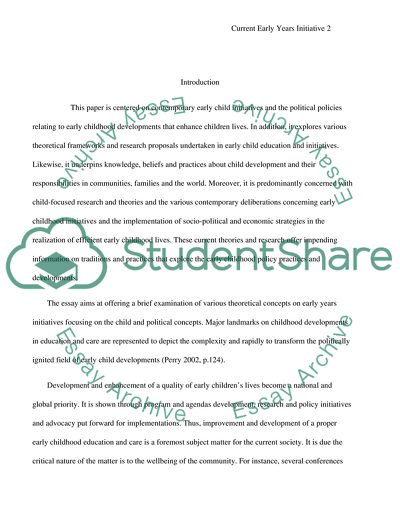Cite this document
(Current Early Years Initiatives Driven by Political and Child Focussed Essay Example | Topics and Well Written Essays - 3250 words, n.d.)
Current Early Years Initiatives Driven by Political and Child Focussed Essay Example | Topics and Well Written Essays - 3250 words. https://studentshare.org/education/1872047-critical-issues-and-contemporary-debates-3-questioncurrent-early-years-initiatives-are-driven-by-two-different-agendas-political-and-child-focussed
Current Early Years Initiatives Driven by Political and Child Focussed Essay Example | Topics and Well Written Essays - 3250 words. https://studentshare.org/education/1872047-critical-issues-and-contemporary-debates-3-questioncurrent-early-years-initiatives-are-driven-by-two-different-agendas-political-and-child-focussed
(Current Early Years Initiatives Driven by Political and Child Focussed Essay Example | Topics and Well Written Essays - 3250 Words)
Current Early Years Initiatives Driven by Political and Child Focussed Essay Example | Topics and Well Written Essays - 3250 Words. https://studentshare.org/education/1872047-critical-issues-and-contemporary-debates-3-questioncurrent-early-years-initiatives-are-driven-by-two-different-agendas-political-and-child-focussed.
Current Early Years Initiatives Driven by Political and Child Focussed Essay Example | Topics and Well Written Essays - 3250 Words. https://studentshare.org/education/1872047-critical-issues-and-contemporary-debates-3-questioncurrent-early-years-initiatives-are-driven-by-two-different-agendas-political-and-child-focussed.
“Current Early Years Initiatives Driven by Political and Child Focussed Essay Example | Topics and Well Written Essays - 3250 Words”. https://studentshare.org/education/1872047-critical-issues-and-contemporary-debates-3-questioncurrent-early-years-initiatives-are-driven-by-two-different-agendas-political-and-child-focussed.


